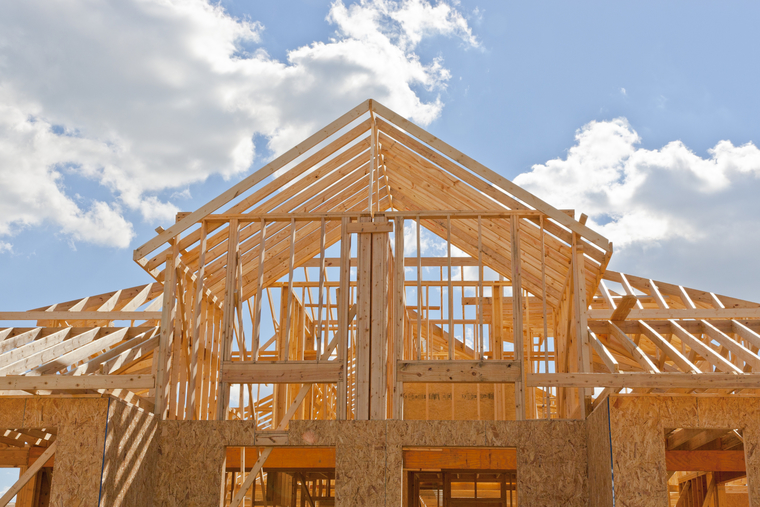2.5 Per Household

On average, up and down the Front Range, there are 2.5 people living in each household.
This is an important number to know as you read the stories about census data and population growth.
Obviously, as population grows, housing needs also grow.
For every 100 people added to the population, there needs to be 40 more housing units to accommodate those people.
Those housing units come in all shapes and sizes of course. Some are for sale and some are for rent.
The projection is that by 2040, Northern Colorado (Larimer and Weld Counties) will have 1,000,000 people which is 300,000 more than today.
So, Northern Colorado needs a total of 120,000 more housing units or 7,000 per year.
Metro Denver will grow by 500,000 people in that same time frame and will need 200,000 more housing units or 12,000 per year.
Big population growth means big growth for housing.
Rate Prediction

Our Chief Economist, Matthew Gardner predicts that interest rates will hit 5.4% by the end of 2023.
His prediction is aligned with most expert real estate economists.
While rates will continue to bounce up and down as the year goes on, the general trend will be lower rates.
This prediction is mainly based on the Fed tempering their increases as inflation starts to ease in the second half of the year.
Because of this prediction, we see housing demand increasing as rates decrease throughout the year.
No Bear

Altos Research is one of the most trusted sources of real estate market information in the United States. Each week they track every single home for sale across the Country. They analyze the pricing, supply, demand, and status changes for all listings. This amount of data allows them to expertly predict changes in the market.
Their founder, Mike Simonsen, recently said this about the current state of the real estate market:
“The most important thing to take away is that the most bearish scenarios for home prices this year are not taking place. If a buyer is sitting on the sidelines waiting for a home price crash, in general across the country that’s not happening.
“We can measure demand and the direction of future sales prices by looking at the percent of homes on the market with price reductions. This number, frankly, is lower than I would have expected given how few buyers were out in the fall. This a sign that sellers are not panicking and that smart, properly priced listings are getting their offers.”
The annual Market Forecast featuring Chief Economist Matthew Gardner is February 1st at 5:30pm. To see the details and to RSVP, visit www.ColoradoForecast.com
Why aren’t home builders building more homes?


This article originally appeared on Inman.com
Housing markets all across the U.S. are suffering from serious shortages of homes for sale, and this isn’t expected to change in the foreseeable future.
When I think about inventory levels and the fact that demand is clearly outstripping supply, it makes me question why home builders aren’t stepping up to the plate to meet all this pent-up demand.
Interestingly enough, there are several obstacles holding builders back that I think are worthy of further discussion.
According to my calculations, since 2008, builders have started construction of new single-family homes at an average annual rate of about 594,000 units per year. For context, the average annual rate of new-home starts between 1963 and 2007 was over 1.1 million, so we have been behind the ball for some time now.
Although new-home starts have now risen to 835,000 units from the historic low of 353,000 units that we saw in 2009, we are still well below the level that meets demand given new household formations.
Since 2009, new housing supply has consistently fallen short of new housing demand. The shortfall was the largest in 2011 at 465,000 housing units, and cumulatively through 2015, the total shortfall was 2.2 million housing units.
Currently, I estimate that the amount of housing supply necessary to just keep pace with demand is probably around 1.1 million housing units a year; however, housing completions as of May were running at an annual rate of just 817,000 — far below what is needed.
So why is this? The simple answer is that it is very expensive to build a new home.
The expense of building a new home can be essentially broken down into three components: land, labor and materials.
Land
Let’s start with land, which is expensive, and it is very expensive in markets where land availability is scarce (either because of unique topography or political limitations — or both).
This is further exacerbated in markets where the economy is growing rapidly and attracting more new residents.
Another hindrance is the cost of obtaining a building permit, which is remarkably high, thanks to government regulations, and can account for almost 25 percent of the final price of a new single-family home.
Labor
The second thing to consider is labor. As the housing market was entering the Great Recession, many construction workers were laid off and have not subsequently returned.
In fact, my calculations indicate there are currently over 200,000 job openings in the construction industry, and this lack of supply combined with high demand for labor, has led to rising labor costs.
Material costs
Finally, material costs. The cost of homebuilding materials have risen by almost 5 percent due to high demand and low supply. Everything from the copper used in wiring to the lumber used for framing, continues to escalate at fairly rapid rates.
All of this combined makes it very expensive to build homes — especially affordable homes.
In fact, the National Association of Homebuilders stated back in 2015 that it is difficult to build a home anywhere in America for less than $300,000. Then take into account that only 4 percent of all new homes sold in 2016 were priced below $150,000, and in the Western U.S., just 6 percent were priced below $200,000.
Conditions are particularly tight at the more affordable end of the market, clearly reflecting the fact that fewer entry-level homes are being built.
Between 2004 and 2016, completions of smaller single-family homes (under 1,800 square feet) fell from nearly 500,000 units to only 136,000. Similarly, the number of townhouses built in 2016 (98,000) was less than half the number started in 2005.
It is clear that we need more housing solutions to address the shortages out there, but it won’t be easy.
From a builder’s perspective, they cannot change material costs, nor can they force workers into the construction industry.
However, what they can do, and what needs to be done, is try and shift government policy to better address permit fees, hookup fees, impact fees and the like. If these costs could be lowered, I believe that many builders would have the ability to ramp-up activity in a fairly dramatic fashion.
Given how important increasing the supply of new homes is to the long-term health of the market, I hope that the efforts being undertaken at the national level by the NAHB, and the local level by various homebuilder associations, start to see positive results in the near future.
For the sake of our housing market, we need to make it easier for builders to do what they do best: build homes.
 Facebook
Facebook
 Twitter
Twitter
 Pinterest
Pinterest
 Copy Link
Copy Link